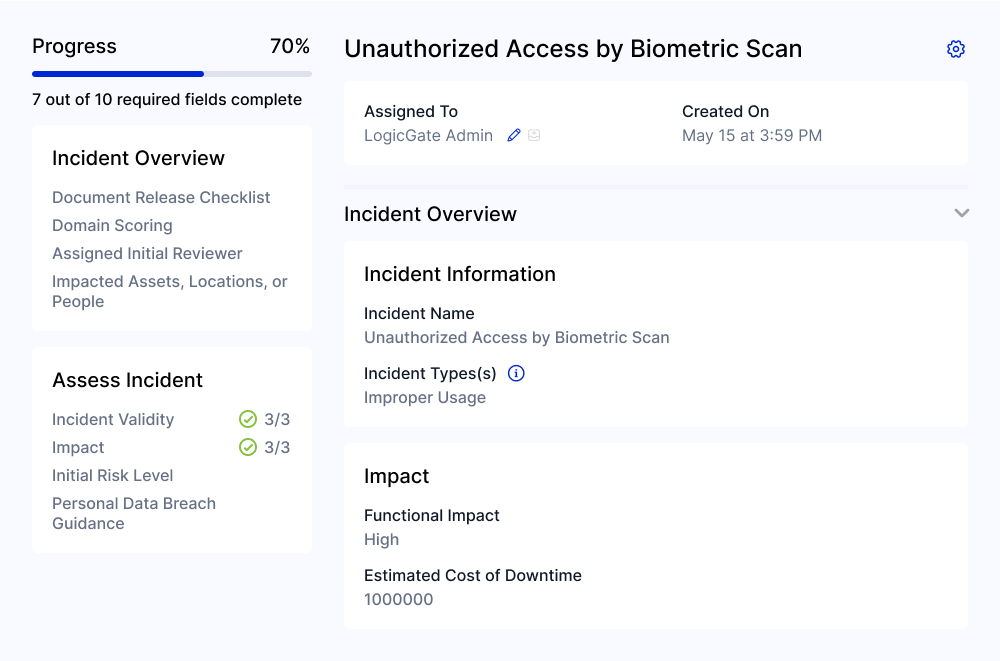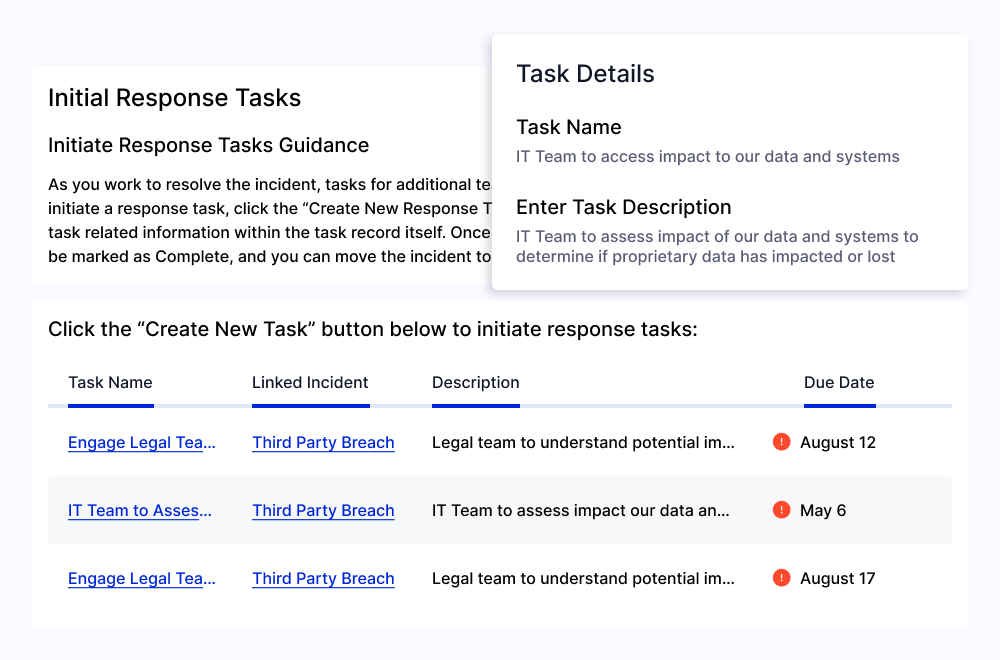Incident Management Application
Improve incident response by streamlining management with automated workflows, centralized reporting, and real-time insights to minimize impact.

What is the Incident Management Application?
The Application helps teams effectively log, triage, and resolve incidents in less time by automating and standardizing incident response workflows across the enterprise. The Application contextualizes each incident by risk, providing teams with near real-time insights needed to strategically prioritize and track response.
Log, Triage, and Resolve Incidents in Less Time
Create a unified incident management process that guarantees timely access to critical information for the right personnel. Centralize communications and workflows to streamline incident response efforts, enhance collaboration, and improve overall efficiency in incident management.

Improve Incident Visibility with Centralized Reporting, Tracking, and Scoring
Streamline incident reporting and resolution processes with an easy-to-use incident logging portal for all employees, customers, and third parties. Automatically calculate incident risk levels based on expected functional impact, informational impact, and recoverability efforts. Leverage a pre-built scoring methodology or customize it to align with your organization’s specific risk tolerance.

Accelerate Incident Response with Automated Workflows
Immediately notify response teams when new incidents are reported and quickly triage incidents based on their risk level. Streamline response workflows with automated assignment notifications, centralized task management, and trackable resolution progress.

Strengthen Operational Resiliency with Near Real-Time Incident Insights
Gain the visibility you need to inform strategic risk decisions with near real-time insights into key metrics like open incidents by risk level, incidents by type and source, and the impact of system downtime. Identify and document areas of improvement following the resolution of each incident to continuously improve processes while building the business case for future team and technology investments.